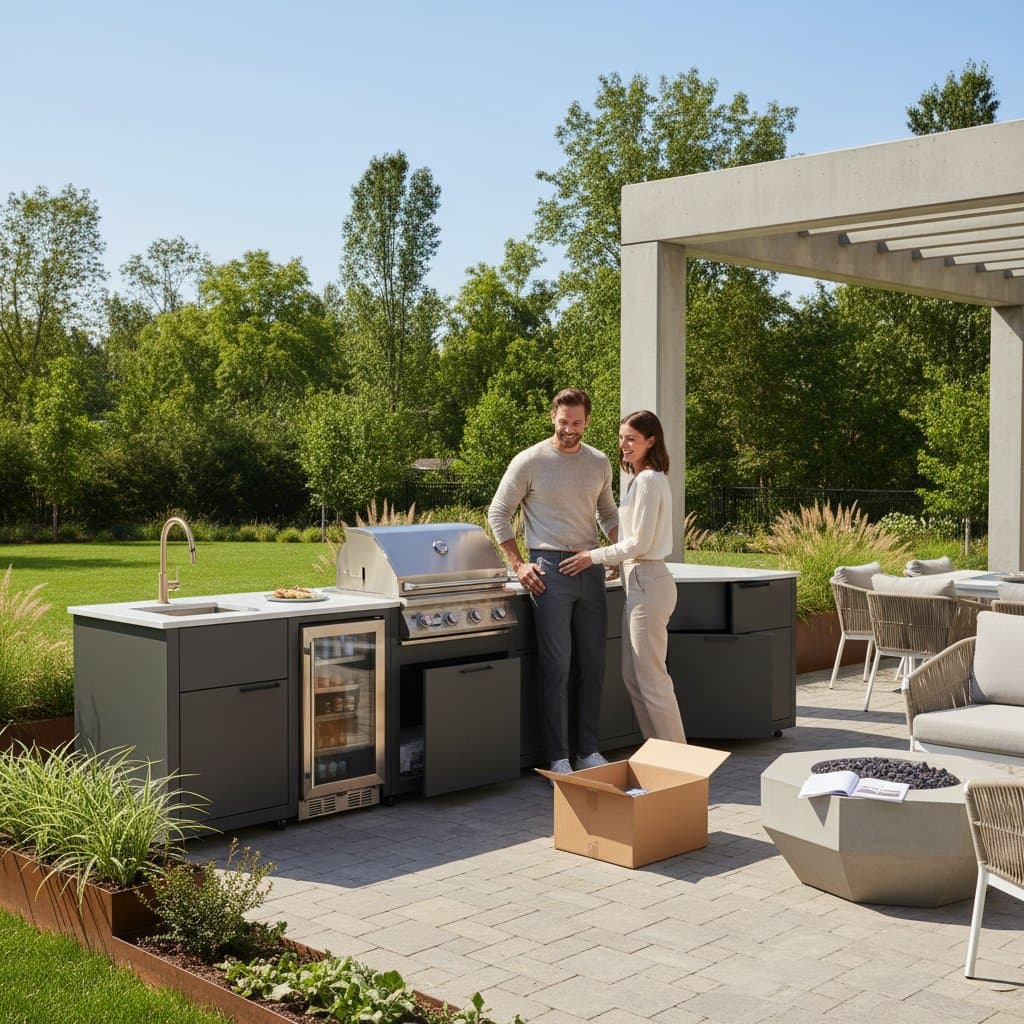Introduction to Modular Outdoor Kitchens
Homeowners in San Diego seek ways to enhance their outdoor spaces without extensive renovations. Modular outdoor kitchens provide an ideal solution. These systems assemble quickly, often within a single weekend, and adapt to various backyard layouts.
In 2025, advancements in design and materials make these kitchens more accessible than ever. They combine functionality with aesthetic appeal, suited to the region's mild climate. This guide explores how to select, install, and customize a modular outdoor kitchen for lasting enjoyment.
Benefits of Modular Designs
Modular outdoor kitchens offer several advantages over traditional builds. First, they require minimal professional labor, reducing overall costs. Assembly involves straightforward connections, similar to building with interlocking blocks.
Durability stands out as a key feature. Materials such as stainless steel and weather-resistant composites withstand coastal humidity and salt air. These kitchens resist fading, rust, and cracking, ensuring long-term performance.
Flexibility allows for future adjustments. Homeowners relocate modules easily or add components like bars or storage units. This adaptability supports evolving needs, from family gatherings to quiet dinners.
Investing in a modular kitchen yields strong returns. Enhanced outdoor living spaces increase property values. Studies indicate that well-designed patios and kitchens boost home appeal by up to 20 percent in desirable markets like San Diego.
Essential Features for 2025 Models
Current models emphasize ease and innovation. Snap-together systems use precision-engineered joints that secure without tools beyond basic wrenches. This design minimizes installation errors and speeds up the process.
Weather readiness defines 2025 offerings. UV-protected surfaces prevent sun damage, while sealed counters repel moisture. Integrated drainage systems handle occasional rains, keeping the area dry and usable.
Smart integrations appear in premium options. Some modules connect to home networks for temperature control or lighting automation. These features elevate convenience without complicating the core assembly.
Sustainability plays a growing role. Many brands incorporate recycled materials and energy-efficient appliances. Grills with low-emission burners reduce environmental impact, aligning with eco-conscious lifestyles.
Step-by-Step Installation Process
Installing a modular outdoor kitchen requires planning but remains achievable for most homeowners. Begin by selecting a flat, level site near utilities. Measure the space to ensure modules fit comfortably, allowing 3 to 4 feet around the perimeter for movement.
Prepare the ground on Friday evening. Clear debris and lay a gravel base for stability. This foundation prevents shifting over time, especially on San Diego's sandy soils.
Assemble the core frame on Saturday morning. Start with the main cabinet unit, attaching side panels using provided clips. Follow the manufacturer's diagram, which typically illustrates connections in sequence.
Integrate appliances next. Position the grill, sink, and refrigerator into designated slots. Secure gas or electrical lines according to local codes; consult a licensed professional if connections exceed basic plug-ins.
Add finishing touches by afternoon. Install countertops by aligning and locking them into place. Test all components for functionality before evening use.
On Sunday, focus on details. Apply sealants around joints for extra protection. Arrange seating and accessories to complete the setup. The entire process fits within 48 hours, leaving time for a celebratory cookout.
Customization and Expansion Strategies
Modular systems excel in personalization. Choose from configurations like L-shaped or straight-line layouts to match your yard's dimensions. Select finishes in stone, wood-grain, or sleek metal to complement home exteriors.
Expansion occurs seamlessly. Add a pizza oven module later by snapping it onto the existing frame. Relocation involves disassembling and reassembling in a new spot, a task completable in half a day.
Budget-friendly upgrades enhance versatility. Incorporate fold-down shelves for compact storage or LED under-cabinet lights for evening ambiance. These additions maintain the system's modular integrity.
For San Diego residents, consider coastal themes. Opt for modules with nautical accents or tropical hardwoods. Such choices blend with beachside aesthetics while providing practical utility.
Understanding Costs and Value
Modular outdoor kitchens range from $4,000 to $12,000, depending on size and features. Basic kits with essential cabinets and a grill start at the lower end. Mid-range options include sinks and weatherproofing for around $7,000.
Premium setups reach $12,000 with smart tech and custom counters. Factor in delivery fees, typically $200 to $500, and any utility extensions. These investments pay off through reduced maintenance and increased home enjoyment.
Compare this to custom builds, which often exceed $20,000 and take weeks. Modular alternatives save time and money while delivering comparable quality. Financing options from manufacturers ease upfront payments.
Long-term savings arise from durability. Replaceable modules extend the kitchen's life beyond a decade. This efficiency makes modular kitchens a smart choice for value-driven homeowners.
Tailoring to San Diego's Coastal Lifestyle
San Diego's year-round sunshine invites extended outdoor use. Modular kitchens capitalize on this by offering shaded modules or breeze-friendly open designs. They transform patios into hubs for al fresco dining.
Local regulations favor these systems. Permits process quickly for pre-fabricated units, often requiring only a site plan submission. This streamlines approval compared to full custom projects.
Embrace the region's vibrant culture through kitchen features. Include spaces for fresh seafood prep or herb gardens integrated into counters. Such elements reflect Southern California's fresh, casual vibe.
Community trends show rising popularity. Neighborhoods from La Jolla to Point Loma feature these installations, fostering social connections. Your kitchen becomes a gathering point for friends and family.
Transform Your Backyard This Weekend
Ready to elevate your outdoor experience? Modular kitchens deliver style, convenience, and durability tailored to San Diego living. Select a kit that fits your vision and assemble it over the weekend.
Enjoy immediate benefits like enhanced entertaining and property value. These spaces encourage healthier, outdoor-oriented routines. Begin planning today for a refreshed backyard tomorrow.

